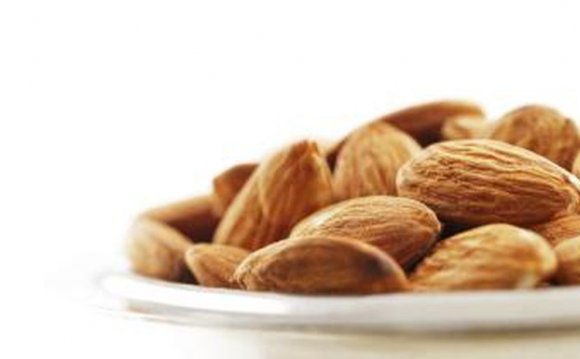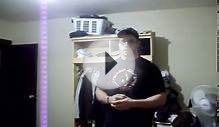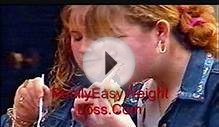
With the new year now upon us, many people are going to be looking to lose any excess bodyfat that has accumulated throughout the year or over the holiday season. The best method to do this is with a combination of good quality training along with a properly planned diet.
You have probably heard the saying, "Abs are made in the kitchen" and it couldn't be more true. Regardless of what type of training you are doing, if your diet isn't in line, you aren't going to see the results you desire.
There are quite a few different theories as to the best way to lose bodyfat but most methods do have similarities. The general consensus is that the major macronutrient that will need to be adjusted is carbohydrates. The reasoning for this is because carbohydrates are your bodies' preferred source of fuel.
When there is an abundant amount, your body will not need to turn to its fats stores for fuel therefore meaning your bodyfat will remain the same. When you create a need for your body to dip down into its fuel stores, that's when you see fat loss. So how do you go about doing this?
Proper Timing:
Proper timing is one very key element in cutting up diets. You need to know what types of foods to eat and when. Following a proper protocol can have a very profound effect on your performance level and how you feel in general.
The first element you need to take care of is that you are eating at least 5-6 times a day. This keeps your metabolism running more efficiently, allowing you to burn more calories throughout the day as well as signaling to your body that it is receiving a steady supply of food therefore it sees no need to hang on to its fat stores in case of a famine.
Space these meals 3-4 hours apart, while trying to consume your first as soon as you can upon waking and your last about an hour or so before bed.
So for example, eating at 7, 10, 1, 4, 7 and 10 would be a good schedule. Obviously this may not suit your particular needs, but try and stick with a somewhat similar spacing.
Carbohydrate Intake:
The next element to plan out is your carbohydrate intake. First, you want to make sure the carbohydrate sources you are eating are complex for the most part so you will have a slower released source of energy while decreasing the chance for fat storage.
These will also provide you with more nutrients as well, which is important, as you want to get the biggest nutritional bang for your buck when you are on a calorie-reduced diet. Good sources to focus on are:
* Although make sure to check the ingredient lists on this one.
Fruit is acceptable for some people in their cutting diets while others may chose to completely cut this out. If you are going to have fruit, it is best to try and time it so that you are eating it around your workouts, as this is when you will need a faster releasing source of carb. And of course, the staple of your carbohydrate source while cutting should come from vegetables.
This food group will provide you with much needed fiber to help fill you up and keep cravings at bay as well as provide an abundance of nutrients all while offering very little calories. Peas and corn are two vegetables however to be aware of as they are much higher in calories and carbohydrates.
Carbohydrate Timing:
The timing of your carbohydrate intake is essential for success during a cutting diet. Since carbohydrates are the bodies main source of fuel, you will want to take them at times when you are going to be most active and most likely to use up the energy they provide. This means eating larger quantities before and immediately after your workout when your body is recovering.
Generally, eating the majority of your carbohydrates around this training, as well as in the morning hours is the best approach as when you eat them in the morning you are more likely to use them up throughout the rest of your day.
Later in the evening you will want to start tapering down your carb intake focusing more on the vegetable sources in an effort to reduce total number of grams.
Protein Intake:
The next element to consider is protein intake. While cutting, it is especially important to keep this up otherwise your body might start turning to it's protein sources for energy which could result in a loss of muscle tissue.
Concentrate on getting lean sources at every meal in order to balance your blood sugar levels and promote a higher satiety level. Before bed, you want to try and include a casein protein source as this will release into the bloodstream slower, thus providing you with a steady supply of amino acids for your body to feed off of over night. Cottage cheese is probably the best option here.
Dietary Fat:
The body needs some healthy fats in order to maintain its immune function, vital organs, keep good cholesterol levels up as well as promote a healthy appearance of the skin and hair, so including these in your diet is a necessity.
They also help to regulate your insulin levels and will keep you feeling much more satisfied after a meal than if you had just eaten carbohydrates and protein alone.
Since you are going to be reducing your carbohydrate intake as the day goes on, a good idea is to start focusing more of your later meals in the day around protein and fat instead.
So for example, have your first three or four meals mostly coming from protein and carb sources (say breakfast, pre-workout, postworkout and lunch), along with your last two or three focusing around protein and fat (mid-afternoon snack, dinner, and possibly one evening meal).
This will set your body up for optimum fat burning throughout the entire day as well as throughout the night. You will also help to better regulate insulin levels and keep growth hormone where it should be as this is a prime substance that will help you to maintain your lean muscle mass and reach your goals (as growth hormone is primarily released at night, however also is blunted by high carbohydrate intake, thus making your last few meals low carb is ideal).
Cheat Meals:
One final aspect that should be covered is cheat meals. Most people, while on a cutting diet start to experience extremely intense cravings, especially if they are going quite low with their calorie level.
In an effort to combat that, you might decide to have one designated 'cheat' meal a week where you eat whatever you are craving in moderation to overcome this psychological hurdle.
If you are looking to get into the single digits in your bodyfat while on a cutting diet, you might just want to have a cheat meal every few weeks however, depending on just how much you allow yourself to indulge.
A little extra won't hurt you too much but if you are trying to get very lean and find your cheat's a little out of control, this could pose a bit of a problem to seeing success.
Conclusion:
An important point to remember when designing a cutting diet is that everyone's body is unique and what works really great for one person won't necessarily work for another. You need to play around and tweak small aspects of what you are doing to learn how your body reacts and what gets the most results.
By following these guidelines though you can be sure you will at least start off on the right track initially and should see some fat loss provided your training program is up to par as well.

INTERESTING VIDEO












